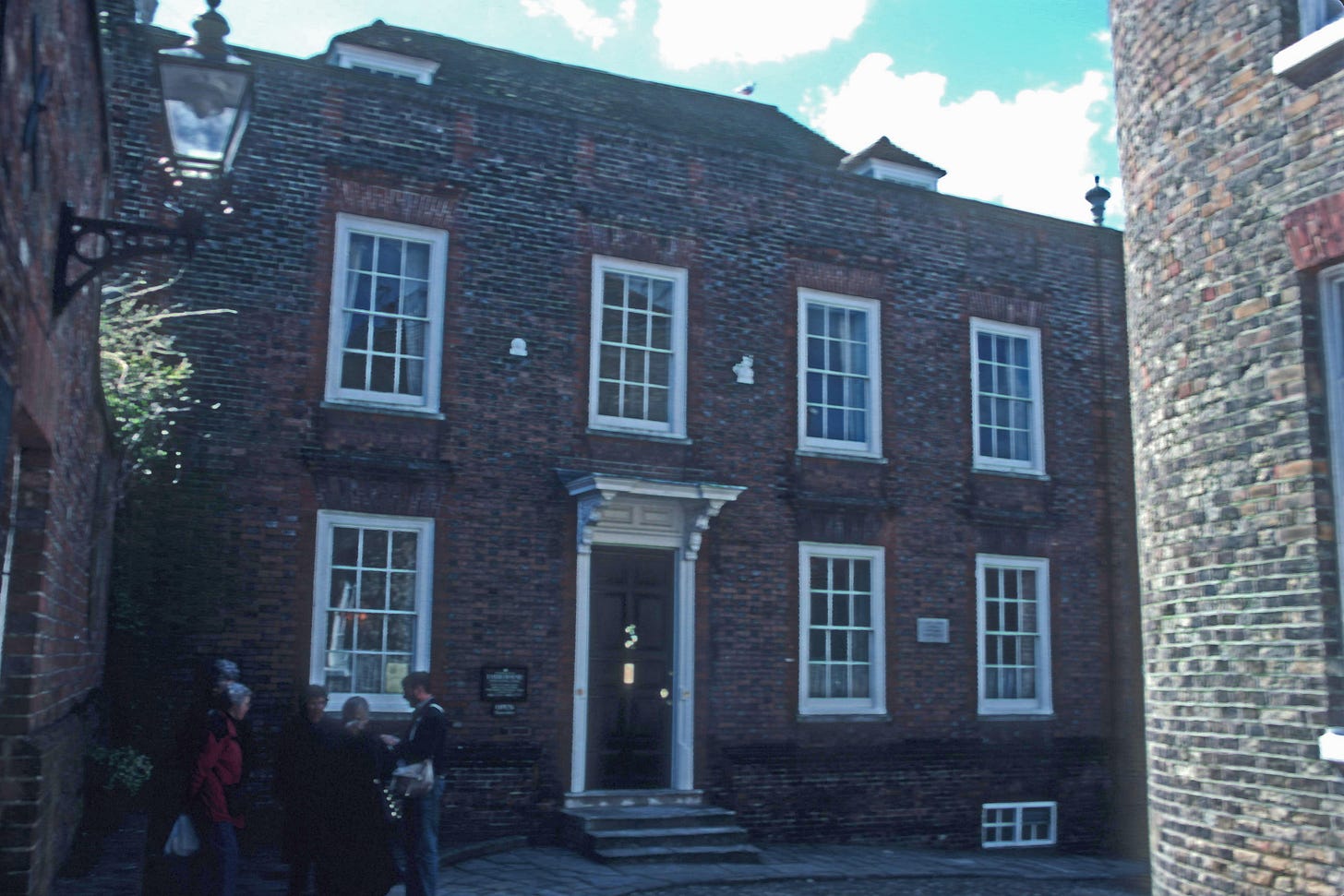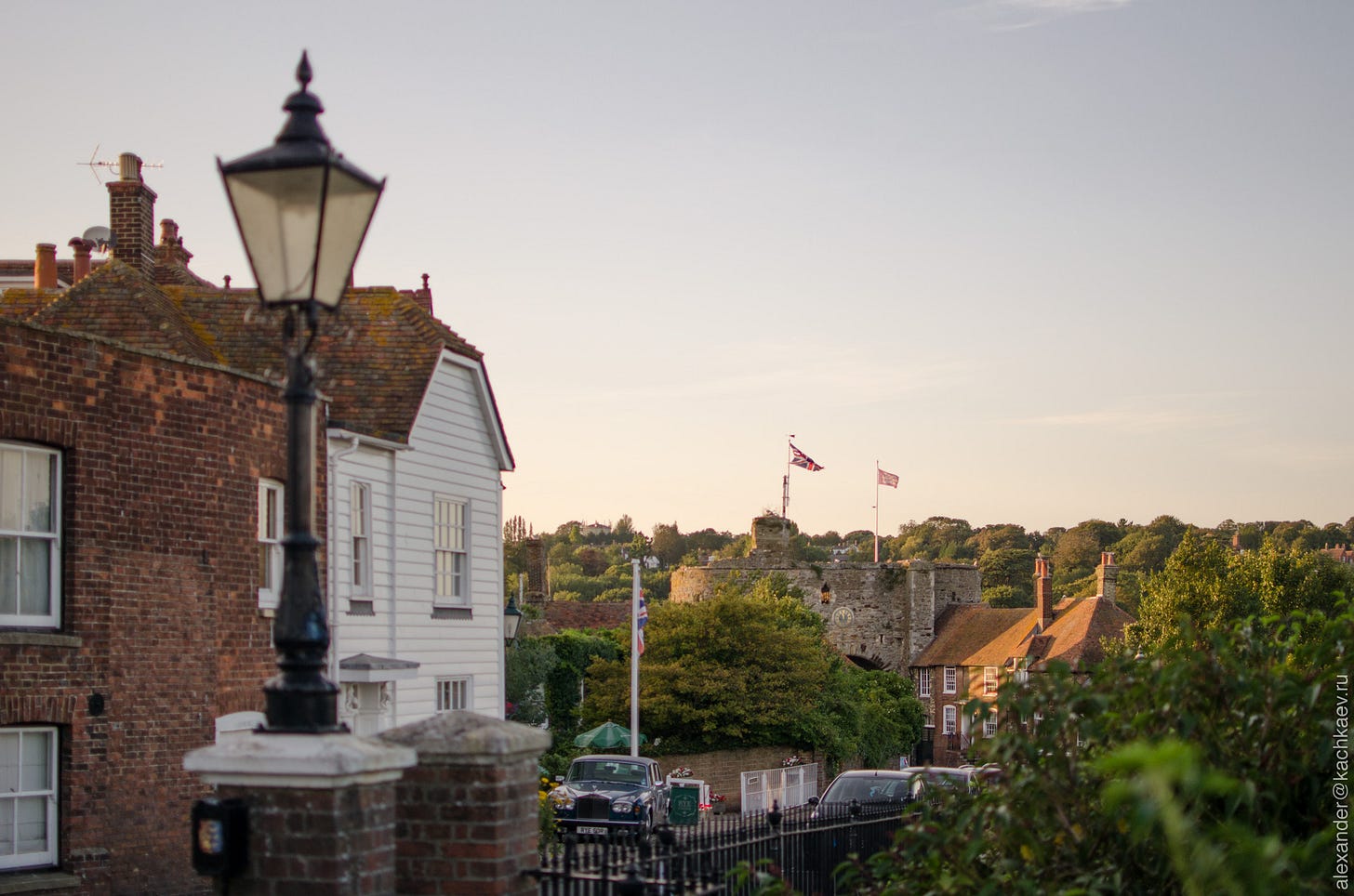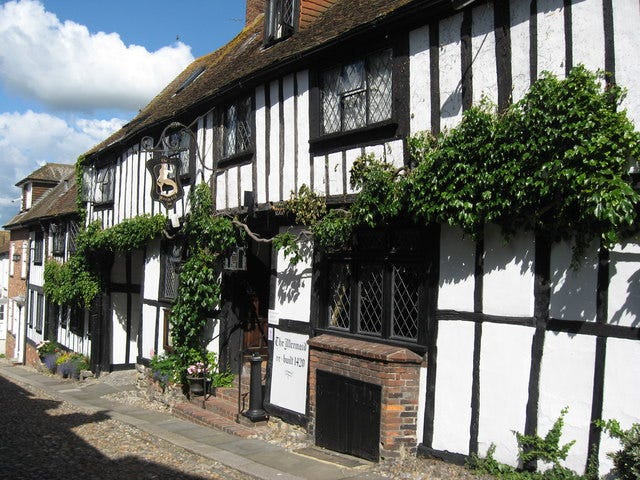Spirit of Place: Henry James and the Red Roofs of Rye
My English wife and I spent our honeymoon here, 33 years ago. We went back recently; it hasn't changed much.
RYE, ENGLAND — During the summer of 1896, Henry James got his first glimpse of the English town in which he would spend most of the last 18 years of his life. The American novelist had been living as a confirmed expatriate in London since 1876. Pressed with the deadlines for a serial for The Atlantic Monthly, he was seeking a more isolated place to work. A friend found him a cottage for rent on a hill overlooking the vast Romney Marsh, a luxuriant flatland of grassy fields and grazing sheep on the Sussex coast. James wrote later that the view from the cottage terrace was “as level, as pure, as full of rich change as the expanse of the sea.” James mentioned in particular “a red-roofed town, of great antiquity, perched on its sea rock.”
The red-roofs belonged to the ancient seaport of Rye, one of the best preserved medieval towns in England. Two years later, James returned to Rye and took a long-term lease on Lamb House, a red-bricked Georgian manor that had belonged to a long line of the town’s mayors. He eventually gave up his home in London and purchased Lamb House outright. In the detached Garden Room, James spent each morning dictating his stories and novels to a stenographer. According to James’s leading biographer, Leon Edel, “the morning click of the typewriter… became known to Rye—and the distant sound of a grave and measured voice weaving sentences.
It is easy to understand what drew James to Rye. Although its glory days as a major seaport are long over, the town offers healthy portions of English seaside, countryside, and history. The medieval street plan is intact, and about 100 timber-frame structures from the 16th century remain. Its narrow, cobblestoned lanes bustle by day, yet fall silent and brooding at night, lit eerily by the glow of street lamps and the moon on the sea beyond.
James was not the only writer to find Rye and its surroundings irresistible. His contemporaries H.G. Wells, Stephen Crane, Joseph Conrad, and Ford Madox Ford lived nearby. E.F. Benson, whose Mapp and Lucia stories were set to a thinly disguised fictional version of the town, moved into Lamb House shortly after James’s death, and from 1924 to 1947 Conrad Aiken lived around the corner in the Jeake’s House on Mermaid Street (now Rye’s premier bed-and-breakfast inn, where my wife and I stayed on a romantic return to Rye a couple of years ago.)
Although Rye’s isolated setting has long made it a sanctuary for the creative spirit, the town was not always so tranquil. The sea once surrounded Rye on three sides, and in the 13th and 14th centuries it became one of the most important ports on the south coast of England. The town reached its peak during the 16th century, when its fleets supplied fresh fish to the royal household of Queen Elizabeth I.
As late as 1823 the tides still lapped the cliffs of Rye. But the three rivers that empty into Rye Harbor, the Rother, the Tillingham, and the Brede, gradually silted up and left Rye aground, three miles from the English Channel. Yet the town has not lost its watch on the sea. From the lookout at the end of High Street you can see out to the harbor, and, on a clear day, across the Channel to Boulogne and Dieppe in France.
Henry James was 55 years old when he moved to Rye, and he felt he was near the end of his career. He wrote to a friend that Lamb House was “such a place as I may… retire to with a certain shrunken decency and wither away in—in a fairly cleanly and pleasantly melancholy manner—toward the tomb.”
But in fact, James wrote this last three great novels at Rye—”The Ambassadors,” The Wings of the Dove,” and “The Golden Bowl”—and his presence made the town a center for literary hobnobbing. Edith Wharton, E.M. Forster, Rudyard Kipling, George Bernard Shaw—each made the pilgrimage to Lamb House, sometimes taking the morning train from London in time for lunch. James would meet his guests at the little Rye railroad station, accompanied by a servant with a wheelbarrow to carry their luggage up the cobblestones of Mermaid Street.
(Readers will note that I have not resisted the temptation to do a great deal of literary namedropping in this piece. When writers more famous than I stop doing it, I will too.)
When lunch had been served, James would lead his party on a tour of the town. Rye had changed little in the 200 years before he arrived, and it has not changed much since. Along the Cinque Ports Street, parts of the old town wall still stand, including the 14th century Land Gate. The two barrel-shaped towers and stone archway of this massive portal were once fitted with a drawbridge, and during high tide this was the only entrance to the town.
In the center of Church Square, at the highest point in Rye, is St. Mary the Virgin, one of the most glorious churches in this part of England. Its buttresses seem to drift out from the church walls as if they were gently floating. Two rows of high arches grace the interior, and in the early afternoon the sun streams in through the stained glass windows and sets the chancel glowing.
A short walk from Church Square takes you to the end of Watchbell Street, which looks out over the cliffs to Strand Quay. This was the center of trade during the prosperous Elizabethan era. Once the sea reached to the edge of the quay, but today the wharf is touched only by the banks of the River Tillingham. From there, Traders Post leads into Mermaid Street, where the medieval, black-timbered Mermaid Inn, once a haunt of smugglers, has been left to a peaceful existence as a hotel and restaurant.
At the top of Mermaid Street is the red brick facade of Lamb House. During the warmer months, the first floor and garden are open to the public. A number of Henry James’s books, letters, and other possessions are on display. Among them is a copy of the lease James signed when the house first fell into his hands—”the calmest yet cheerfullest that I could have dreamed,” as he wrote his sister-in-law, “in the little old, cobblestoned, grass-grown, red-roofed town.”
Note: This story is adapted from pieces about Rye I published in Travel & Leisure and the International Herald Tribune in the early 1990s.








